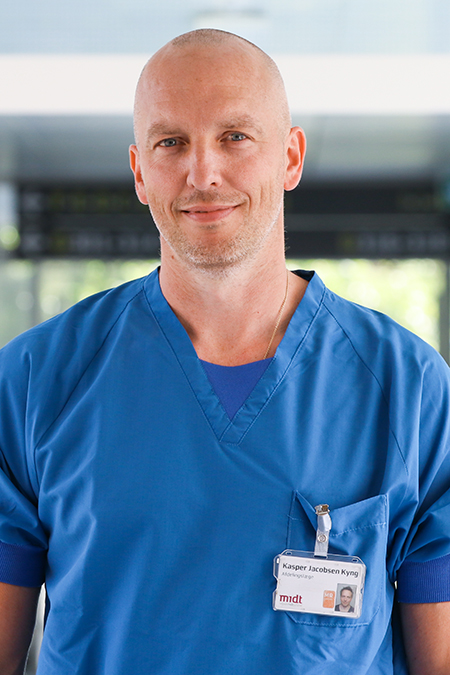Improving diagnosis and treatment of babies at risk of brain injury
Meet Kasper Jacobsen Kyng
“My most important contribution is to protect the brains of newborn babies, by improving the diagnosis of babies at risk of brain injury and improving neuroprotective treatment. Ideally preventing brain injury from occurring in the first place.”
How do we identify and predict brain injury in newborns? Associate Clinical Professor and Neonatal Cardiologist, Kasper Jacobsen Kyng, born 1976, works in the field of hypoxic-ischemic brain injury and brain-cardiovascular interactions, and as a clinician-scientist working in neonatal intensive care, he strives for every newborn baby to have the best possible chance in life.
“My most important contribution is to protect the brains of newborn babies, by improving the diagnosis of babies at risk of brain injury and improving neuroprotective treatment. Ideally preventing brain injury from occurring in the first place. I dream that we can reach a better diagnosis and treatment of brain injury in newborns so that they can become healthy adults, have their own children and lead a fulfilling life,” he says.
Testing a special treatment
The blood brain barrier among other things means that there are no currently good blood tests to predict brain injury, and the huge difference in individual biological resistance to stress, means that it is difficult to predict how each baby will manage, as they grow older.
A main cause of brain injury in newborns is lack of oxygen at birth, which together with circulatory failure may result in neonatal encephalopathy and in some infants lifelong problems. Oxidative stress is a key mediator of so-called reperfusion injury that is one of the mechanisms in developing brain injury

Endogenous defensive mechanisms, activated by lack of oxygen in muscle tissue, may be amplified for neuroprotective treatment. Kasper Kyng and his colleges are testing whether treatment with repeated cycles of intermittently blocked blood flow to an arm or leg (remote ischemic post-conditioning/RIPC) can protect the brain after hypoxia-ischemia (lack of oxygen and blood flow) at birth.
Fell in love with neonatal intensive care and cardiology
In 2000, when Kasper Kyng was still a medical student, genetics was emerging as a major area of future progress, and he went to the National Institutes of Health in USA. He did his PhD on gene expression, cellular stress and DNA repair at NIH in a collaboration with the institute of Human Genetics at Aarhus University.
“This was a huge learning experience for me and I received The Lundbeck Foundation’s Talent Prize for researchers under the age of thirty and the Aarhus University Research Foundation PhD-Prize for best PhD,“ he says.
This led Kasper Kyng to a career in basic research, but he wanted to combine clinical work with research.
“I chose pediatrics with the heart and initially thought that I would end up in an outpatient specialty. During my pediatric specialization I fell in love with neonatal intensive care, neonatal cardiology and caring for the babies.”
Having worked at NIH with oxidative stress, which is also a major driver in neonatal brain injury this led him to his current area of research. Equally, Kasper Kyng's clinical work in neonatal cardiology is leading to research projects in understanding brain-cardiovascular interactions.